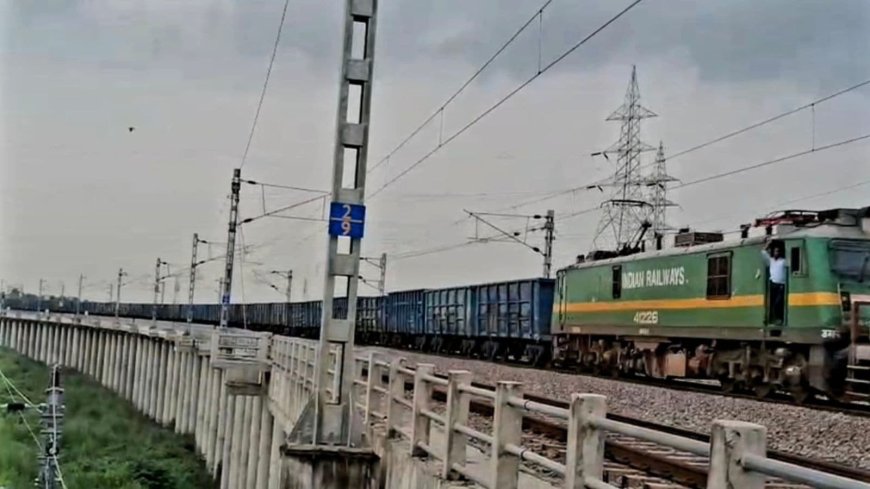Long Haul Achievement: Rudrastra’s 4.5 km Maiden Run Redefines Rail Logistics in Asia
Indian Railways has carried out a trailblazing trial of Rudrastra, Asia’s longest freight train—spanning 4.5 km with 354 wagons and seven engines, marking a milestone in rail logistics.

Indian Railways rolled out a groundbreaking trial—the debut run of Rudrastra, a freight train stretching an astounding 4.5 kilometres, making it the longest in Asia. Powered by seven locomotives and hauling 354 wagons, the test run between Ganjkhwaja in Uttar Pradesh and Garhwa (Jharkhand) marked a landmark in rail freight innovation within India.
A Record-Setting Journey
The journey began on August 7, when the DDU Division of the East Central Railway assembled Rudrastra by joining six empty BOXN rakes, forming a staggering 4.5 km formation. It embarked from Ganjkhwaja, traversed the Dedicated Freight Corridor, and continued to Garhwa Road station, completing a 200–209 km stretch at around 40 km/h, concluding the run by August 8.The Indian ExpressFinancial ExpressThe Times of India
Engineering Feat: Composition and Mechanics
This mega-train comprises:
-
354 wagons, each capable of bearing 72 tonnes.
-
Six rakes linked seamlessly.
-
Seven powerful engines—two at the front and one after every 59 wagons—to maintain traction and stability.Financial ExpressThe Indian ExpressHindustan Times
The name "Rudrastra" fittingly evokes a sense of power and precision.
Why Rudrastra Matters
Operational Efficiency
Traditionally, moving that volume of cargo would require six separate trains, each needing their own crews, schedules, and routes. By consolidating them, Rudrastra streamlines operations, slashing labor costs, fuel usage, and transit time.Financial ExpressThe Indian Express
Freight Capacity Boost
This singular giant can potentially replace multiple runs, offering a scalable solution for high-volume corridors—especially critical on routes like DDU to Dhanbad, a freight powerhouse for India's coal and resource shipments.The Times of India
Modernization & Economic Upside
The trial reflects Indian Railways' push toward infrastructure modernization. It signals readiness to handle growing economic demands with fewer trips, faster turnaround, and lower operational complexity.Gulf NewsThe Times of India
Route Breakdown & Logistics Details
According to a report from today, August 9, the trial continued well into the night—covering 401 kilometres from Uttar Pradesh to coal sidings in the border region of Latehar and Lohardaga in Jharkhand. The train averaged 40 km/h, stopping to split off wagons at key points for unloading: 118 wagons at Phulbasiya, and 236 at Sheopur siding. It crossed each station—like Daltonganj—in about seven minutes.The Times of India
Voices from the Rails
Railway officials hailed the trial as a success in logistics innovation. Divisional Railway Manager Uday Singh Meena noted that Rudrastra would substantially reduce loading time and resource usage. Managing 354 wagons tied to one train, he said, exemplifies improved departmental coordination and future-focused infrastructure development.Hindustan TimesThe Indian Express
Meanwhile, the Swarajya publication quoted the East Central Railway celebrating the achievement as a significant leap in the nation’s freight network, occurring seamlessly from Ganjkhwaja to Dhanbad.Swarajya
Global Context: Setting a New Standard
While India’s Rudrastra leads Asia in length, similar experiments elsewhere show its global relevance. It positions Indian Railways among the front-runners globally in long-haul freight capacity—setting both an operational and technological benchmark.
Conclusion
With the successful operation of Rudrastra on August 7–8, 2025, Indian Railways has achieved a milestone that transcends simple length—it’s an innovation in efficiency, sustainability, and logistic strategy. This massive freight experiment promises to reduce costs, connect demand centers more effectively, and enhance throughput across the Indian rail network.
Looking forward, Rudrastra could reshape how goods move across the country—holding enormous promise for a freight-resilient, future-ready rail system.











